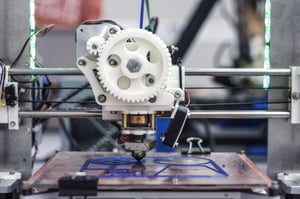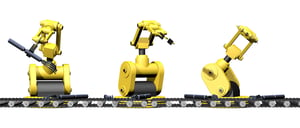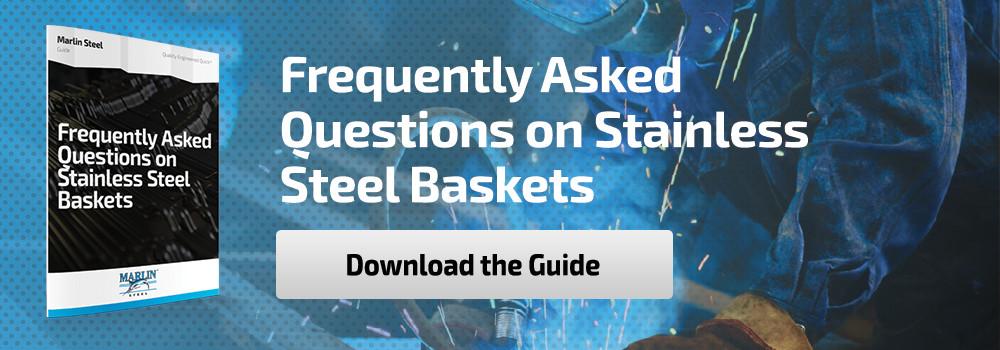 3D printing, or additive manufacturing, has been the focus of some strong discussions in the manufacturing industry in the last few years. While the concept of 3D printing has been around for a while, new advancements in the technology have started to lower the cost of the process to levels that make it more feasible for general manufacturing use.
3D printing, or additive manufacturing, has been the focus of some strong discussions in the manufacturing industry in the last few years. While the concept of 3D printing has been around for a while, new advancements in the technology have started to lower the cost of the process to levels that make it more feasible for general manufacturing use.
The process of using specialized equipment to assemble an object layer by layer has some unique and interesting advantages over traditional manufacturing. However, will 3D printing truly replace more traditional methods of assembling products?
To answer this question, let’s compare the use of 3D manufacturing to other, more traditional manufacturing processes for key tasks.
Prototype Production
One of the biggest advantages that 3D printing over traditional manufacturing is that the 3D printing process generally doesn’t require any special new tooling to make a part. When making a prototype, this can save a lot of time, money, and effort that would normally be spent on tooling the production line and getting an assembly process set up.
If the prototype reveals that the design needs rework, a new design can be programmed into the 3D printer and created relatively fast, while a traditional assembly line would require lots of time to retool the line just to churn out a small handful of prototype parts, which would be a waste of time, material, and labor.
So, when it comes to making a limited-run prototype of a part, 3D printing has a clear edge over the traditional method of tooling an entire production line.
Waste Prevention
Another key advantage of using 3D printing over many traditional production processes is that it is incredibly resource-efficient. With a 3D printer, the only material that is consumed is what passes through the extruder of the printer, which is used for the actual assembly of the product.
Compare this to injection-molds, which often require the use of extra materials to fill the mold. Perforated sheet metal assembly processes will take a whole piece of sheet metal and cut holes into it, leaving the material that once filled each hole as scrap. Now, this scrap material is usually recycled, but it adds extra time and labor to the manufacturing process.
In many cases, additive manufacturing processes will produce less waste than traditional manufacturing would.
Additionally, manufacturers don’t have to produce as much of a given product to justify the setup costs. As noted in a World Finance article on 3D printing, “Whereas the traditional supply chain relies on the efficiencies of mass production and requires a high volume of assembly workers, additive manufacturing needs little more than the necessary raw material to fulfil any one order an the necessary blueprint to produce it.”
Large-Scale Production
 When you’ve moved past the prototyping phase and need to start producing parts at speed, the additive manufacturing process is generally less efficient and reliable than other, more traditional methods of making parts.
When you’ve moved past the prototyping phase and need to start producing parts at speed, the additive manufacturing process is generally less efficient and reliable than other, more traditional methods of making parts.
While 3D printers might not need to be retooled in between production runs, the speed at which a 3D printer can assemble an object often pales in comparison to the traditional assembly line.
This is because 3D printing requires each object to be assembled one layer at a time, with each new layer being directly placed on top of the previous one. Even with a “fast” 3D printer, some small objects can take hours to make.
As pointed out on the 3D Genius FAQs page, a “pair of nut crackers took nearly 3 hours to print.” Injection molding the plastic parts and assembling them in a traditional production line would allow for dozens or hundreds of identical nutcrackers to be made in that amount of time.
So, while 3D printing has a much shorter lead time, it cannot currently compete with traditional manufacturing’s speed for mass production.
Availability of Specific Materials
Thanks to some recent advancements in 3D printing such as Selective Laser Sintering, 3D printing can now be used to make objects out of some metals, as well as polymers.
However, the use of specific materials requires different models of 3D printers that are designed for those materials. Additionally, some metal alloys still cannot be worked in a 3D printer with great quality or consistency because of their high melting points.
This can be a limiting factor when specific materials are needed for a given part.
Scale of Produced Parts
The manufacture of certain large-scale parts can be very difficult with 3D printing compared to traditional manufacturing processes.
With 3D printers, you’re restricted to the total area of the printing bed for making any given part. Depending on the model of 3D printer you use, this could be a few cubic inches or a few cubic feet.
Now, 3D printers can allow you to create a part in pieces for later assembly, but doing so may not be ideal. Not only does this mean using labor for the final assembly of the part (negating the low labor use advantage), it may create stress points in a part that needs to be solid to work at peak performance.
The Winner?
Overall, the use of 3D printing isn’t likely to completely replace traditional manufacturing any time soon.
However, the technology does have incredible utility for small, one-off production runs and the manufacture of small custom work pieces that would normally need a lot of specialized tooling to make.
This is why Marlin Steel recently acquired 3D printing equipment to expand its production capabilities. With 3D printing, Marlin can augment its traditional production processes and increase its ability to provide “Quality Engineered Quick” to clients across America.



.gif)


